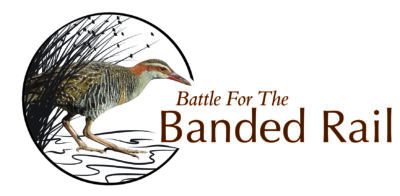
Battle for the Banded Rail is working with local communities to restore thriving birdlife to the Waimeha/Waimea Inlet by trapping introduced predators and restoring habitat around the estuary margin.
The Waimeha/Waimea Inlet is the largest enclosed inlet in the South Island and is a significant site for many coastal birds including the kuaka (bar-tailed godwit), kōtuku (white heron), kōtuku ngutupapa (royal spoonbill), matuku hūrepo (Australasian bittern), koitareke (marsh crake), mātātā (fernbird) and moho pererū (banded rail). It is also home to rare and threatened plants including the coastal peppercress and grey salt bush. The estuary is degraded and the margins have been heavily modified by human activity.
The project now has over 50km of predator control around the estuary, with a network of more than 900 traps. The traps are targeting rats and stoats. Traps were first established on the western side of the estuary in 2015 and now extend from Mapua to Monaco. More than 6,000 predators have been trapped since then.
Providing good habitat where birds can feed and nest is also a high priority. Local communities and school groups have planted over 40,000 native plants since 2015 in key sites around the estuary.
Battle for the Banded Rail is built on thousands of hours of work contributed by surrounding communities. In 2020 over 270 volunteers contributed around 3000 hours of time – checking trap lines, planting, weeding and more.
One Billion Trees funding has enabled further habitat restoration around the estuary margins. Local councils (Tasman District Council and Nelson City Council), DOC, Corrections, Māpua & Districts Community Association, NMIT Trainee Rangers, Project Moturoa, Keep Richmond Beautiful, Rotary and contractors have added 23,000 plants in 2020. One Billion Trees funding will continue for 2021 and 2022.
